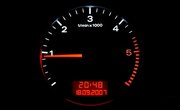
Regardless of the configuration of your boat's navigation lights, wiring the individual lights follows a set pattern that requires you to have a fuse in the wire between the switch and the light. With some creative wiring and a multi-terminal bus bar, you can avoid most of the soldering and some of the wiring. You'll only need one switch to turn your navigation lights on. If one light goes out, the rest continue to burn.
Items you will need
Drill
1/4-inch bit
Jigsaw
Lighted toggle switch
4-terminal electrical bus
Measuring tape
Stranded copper wire
Wire, stranded copper, 8-gauge AWG
Screwdriver
Look under your boat's dash and find a place where the light switch won't interfere with the wiring already present. Drill a 1/4-inch hole in the dash at that location. Insert the blade of a jigsaw into the drilled hole and cut an opening to accommodate the lighted toggle switch.
Position the 4-terminal electrical bus beneath the dash. Using the screws provided with the bus and a screwdriver, attach this "light bus" beneath the dashboard.
Measure the distance between the red navigation light mounted on the boat's port side and the newly installed light bus, using a measuring tape. Cut a piece of stranded copper wire to this length. Repeat this process for all the boat's navigation lights. Cut a piece of 8-gauge AWG stranded copper wire, long enough to reach from the toggle switch to the common power bus beneath the dash, as a power lead for the switch.
Solder one end of an inline fuse to one of the the terminals on the "A" end of the lighted toggle switch, using a soldering iron and rosin-core silver bearing solder. Strip both ends of the 8-gauge wire you cut for the toggle switch. Solder one end of that wire to the terminal on the "B" end of the toggle switch.
Strip the ends of the remaining stranded copper wire. Solder one end of each wire to the red lead of each navigation light. Wrap the remaining end of each wire around one of the screws of the light bus beneath the dash. Tighten the screws with a screwdriver. Wrap the fused lead from the switch around one of the terminal screws of the light bus.
Connect the 8-gauge unfused wire to the boat's common power bus. Connect the black wire of each light to the boat's common ground, individually.
Warnings
- Because one dead navigation light won't affect the rest of the navigation lights, check all of the navigation lights once every 30 minutes when operating in conditions of reduced visibility.
Tips
- The light on the toggle switch will operate when your navigation lights are on. Because the wiring comes off a bus, if you lose one navigation light, the rest will stay lit.
References
- BoatUS Tech Guides: "Navigation Light Standards"
- "The Marine Electrical and Electronics Bible"; John Payne; 1998; p. 100 ff
Tips
- The light on the toggle switch will operate when your navigation lights are on. Because the wiring comes off a bus, if you lose one navigation light, the rest will stay lit.
Warnings
- Because one dead navigation light won't affect the rest of the navigation lights, check all of the navigation lights once every 30 minutes when operating in conditions of reduced visibility.
Writer Bio
Will Charpentier is a writer who specializes in boating and maritime subjects. A retired ship captain, Charpentier holds a doctorate in applied ocean science and engineering. He is also a certified marine technician and the author of a popular text on writing local history.



